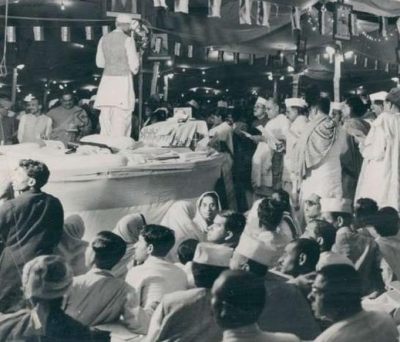
The Lahore Session of 1929 was an important event in the history of freedom struggle. It was at this session, which opened on December 29, 1929, that the Indian National Congress voted for ‘Poorna Swaraj’ or complete independence against a dominion status that was being mooted. The goal of the freedom struggle had been fixed. It was complete independence. Nothing less, nothing more.
Under the new leader, Jawaharlal Nehru, the Congress party passed a resolution fixing January 26, 1930 as the Complete Independence Day of India. Nehru read the pledge, “We believe that it is the inalienable right of the Indian people, as of any other people, to have freedom and to enjoy the fruits of their toil and have the necessities of life, so that they may have full and opportunities of growth. We believe also that if any government deprives a people of these rights and oppresses them the people have a further right to alter it or abolish it…”
On the midnight of December 31, 1929, standing on the bank of the river Ravi, Jawaharlal Nehru raised the “swaraj” flag that was later adopted as the national flag of India.
It was decided to launch the civil disobedience movement against the British during the Lahore Session. The session also saw the emergence of Jawaharlal Nehru as a prominent leader the Indian independence movement.
Though India, eventually, got Independence from the British on August 15, 1947, due to its symbolic importance, the date January 26′ was chosen as the day the Constitution of an independent India would come into effect in 1950.
Did you know?
The design of the Swaraj Flag that Nehru unfurled during the Lahore Session consisted of horizontal tribands of saffron, white, and green with a spinning wheel in the centre. When the National Flag of India was adopted, the charkha was replaced by the Ashoka Chakra representing the eternal wheel of law.
Picture Credit : Google




